Classical music is music composed chiefly for concerts, opera, ballet, and religious services. It includes music for solo instruments, groups of instruments, voices, and both instruments and voices.
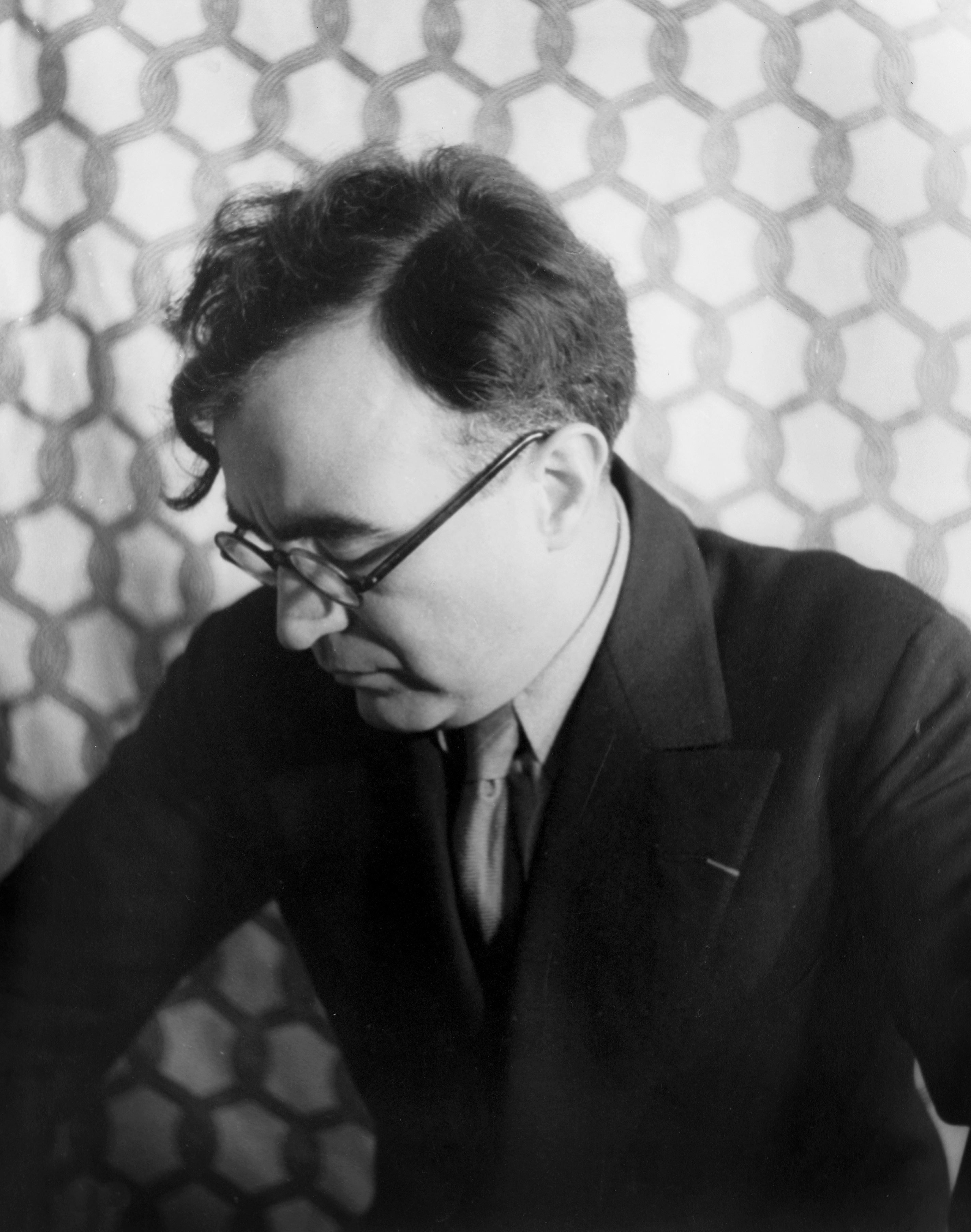
The term classical music is used to contrast with popular music, which includes country music, jazz, and rock music. Classical also has other meanings. Especially if it is capitalized, Classical refers to a style of music that developed in the later 1700’s. In addition, the term describes aspects of ancient Greek and Roman civilization.
For information about other kinds of Western music, see such World Book articles as Country music, Folk music, Jazz, Popular music, and Rock music. For information on the basic elements of music and the music of other cultures, see Music.
Instrumental music
Three main types of instrumental music are: (1) solo music, (2) chamber music, and (3) orchestral music.
Solo music
is music for a single instrument. Solo music has been composed primarily for keyboard instruments, but also for wind and string instruments. Popular keyboard instruments since the 1600’s have been the harpsichord, clavichord, organ, and piano. Wind instruments include the flute, clarinet, oboe, and horn. String instruments include the violin, cello, and guitar. Composers have written many works for solo wind or string instruments accompanied by piano.
Loading the player...Minute Waltz
Short solo pieces became popular in the 1800’s, especially dances and improvisatory works. These improvisatory pieces sound as though they were made up by the musician during the performance, but they were well planned and written in musical notation. Soloists also played characteristic pieces, which expressed a mood and often had descriptive titles.
Chamber music
is written for a small group of musicians, each instrument playing one part. Chamber music was originally intended for performance in a room smaller and more intimate than a concert hall. Music written for at least two instruments is considered chamber music. Chamber music is often identified by the number of instruments, such as a duo, trio, quartet, or quintet. These small ensembles are made up of string or wind instruments, or sometimes of mixed instruments. Chamber compositions are usually named according to the instruments required to play them. For example, a string quartet consists of four string instruments, typically two violins, a viola, and a cello. A piano quintet is made up of a piano and a string quartet.

Orchestral music
is composed for small chamber orchestras and for large orchestras of 80 or more players. Small orchestras of the 1600’s and 1700’s consisted primarily of string instruments and harpsichord. As the orchestra grew in size in the 1700’s and 1800’s, it was organized into four sections—strings, woodwinds, brass, and percussion. For information on the instruments in each section, see Orchestra (The musicians).
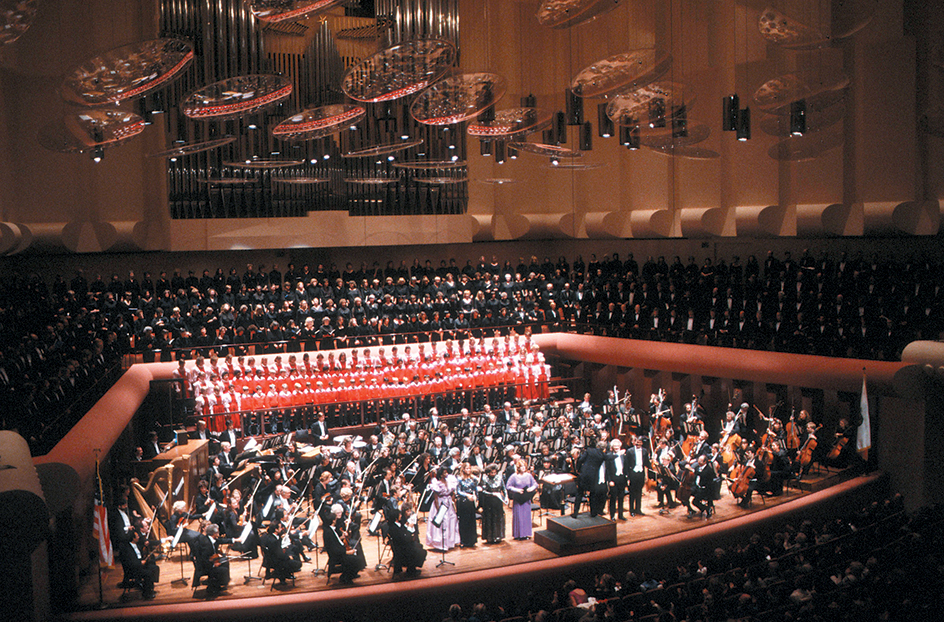
The main types of orchestral music are (1) symphonies, (2) concertos, (3) overtures, (4) suites, (5) incidental music, and (6) symphonic poems.
Symphonies
typically consist of four movements (a large section with a clear beginning and ending). A symphony commonly opens with an allegro (quick and bright) movement. The second movement is slow, and the third is moderately fast. The fourth movement returns to an allegro tempo. Loading the player...
Symphony No. 5 by Beethoven
Concertos.
The solo concerto features one or more solo instruments, such as a piano or violin, with the accompaniment of an orchestra. The concerto grosso uses a small group of instruments playing in contrast to a larger string orchestra. Loading the player...
Brandenburg Concerto No. 3, 1st Movement
Overtures
are orchestral pieces that open operas and oratorios. They are sometimes performed as individual concert pieces. Loading the player...
William Tell Overture
Suites
originated in the pairing of dances during the 1500’s. By the 1800’s, a suite had become a series of connected instrumental movements. Many composers wrote suites for keyboard instruments and for orchestra.
Loading the player...Morning by Edvard Grieg
Incidental music
is written for use in plays. A famous example is the Norwegian composer Edvard Grieg’s incidental music for Peer Gynt (1867), a play by the Norwegian playwright Henrik Ibsen.
Symphonic poems
are one-movement compositions originated by the Hungarian composer Franz Liszt in the 1800’s. Symphonic poems are inspired by subjects taken from literature, mythology, or history that are usually explained in the programs given to the audience. Loading the player...
Les Preludes
Vocal music
The principal types of vocal music are (1) songs, (2) choral music, (3) operas, and (4) oratorios.
Songs
are usually intended to be performed by a solo singer, sometimes accompanied by one or more instruments. Songs vary from simple folk songs to complex composed songs. Simple songs that use the same music for all stanzas of the text are called strophic songs. Most well-known patriotic songs are strophic songs. Part songs are written for two or more vocal lines, most often four or five. These multiple vocal lines are called polyphonic. A single vocal line is called monophonic.
Loading the player...Symphony No. 9 by Beethoven, second movement
Choral music
is written for a chorus or choir singing single-line music in unison or several vocal or instrumental parts. Most choral music is composed in parts for four voices. The voices have come to be known, from highest to lowest, as soprano, alto, tenor, and bass. Loading the player...
Spem in alium (motet)
Operas
are music dramas that combine solo and choral vocal music and instrumental music. They are staged like plays in which the dialogue is mostly or entirely sung. For more information on operas, see Opera. Loading the player...
The Marriage of Figaro (aria)
Oratorios,
like operas, are dramatic works for soloists, chorus, and orchestra. Unlike operas, however, oratorios are presented in concert form without stage action, costumes, or scenery. The oratorio developed in Italy, as did opera, in the 1600’s and soon spread to other countries. Most texts were based on religious themes. Probably the most famous oratorio is Messiah (1742) by the German composer George Frideric Handel. Two significant types of vocal music that resemble the oratorio are the cantata and passion music. Loading the player...
Christmas Oratorio by Johann Sebastian Bach
Classical music forms
Composers give form to their music by using the basic techniques of repetition and contrast of melodies, rhythms, and harmonies. Composers often vary all three during repetition of earlier material. The most important forms of classical music include sectional forms, rondo, variation, fugue, sonata, and free form.
Sectional form.
The basic sectional forms are binary form and ternary form. A composition in binary form has two sections. The first part typically begins in one key and then changes, or modulates, to another key. The second part begins in that key and then modulates back to the key in which it began. The two parts complement each other and are often repeated immediately after they are performed. A composition in ternary form has three sections: (1) a first section, (2) a contrasting second part, and (3) a repetition or varied presentation of the first section.
Rondo
form is an extension of the ternary form. A first section, A, is followed by a contrasting B section, a repeat of the A section, another contrasting section, and a final A section. A five-part rondo follows the sequence A B A C A. A seven-part rondo is A B A C A B A. The composer usually changes the repetitions of the A and B materials from their first presentation for the sake of variety. The A material nearly always returns in the original key.
Variation
form is also called theme and variation form. It consists of a principal melody called the theme and a number of subsequent variations on the theme with changes in rhythm, tempo, and key. Each variation is often the same or nearly the same length as the theme. In most compositions, each variation comes to a complete close before the next variation begins. An entire composition may take the form of a theme with variations, such as Johann Sebastian Bach’s Goldberg Variations for harpsichord. A theme with variations may also make up a movement of a larger work, such as a symphony or a string quartet.
Fugue
is a technique and form of composition in which a main melody is presented in turn by different voices or instruments. In the “exposition” section of the fugue, the main melody is presented as a “subject” and “answer.” Then the subject returns in other closely related keys. The fugue often ends with the subject in the original key.
Sonata
refers to a composition of several movements for keyboard and or for keyboard and other instruments. Sonatas often consist of three or four movements and are often similar to the symphony in structure. The first movement is usually allegro. The second movement is slower and often songlike. A third movement is moderately fast, usually a minuet or a scherzo. The final movement is fast. Composers use the four-movement plan not only for sonatas but also for symphonies and chamber music. The concerto follows a three-movement plan.
Loading the player...Sonata by Domenico Scarlatti
An arrangement of movements in these compositions is called sonata plan or sonata cycle. The first movement of these works, and sometimes the second and fourth movements, are written in sonata form, sometimes called sonata-allegro form. This form is written in three basic sections: the exposition, the development, and the recapitulation.
Free form
gives the composer the greatest freedom of all. It follows no standard pattern or structure, though themes and rhythms usually recur. Free-form compositions include preludes, fantasias, and rhapsodies. Composers of the 1900’s explored a variety of free forms.
History
Early music.
Historians know little about music in the earliest civilizations. Musicians and musical instruments appear in a number of ancient works of art. Few examples of music were written down, however, and so it is almost impossible to know how the music sounded.
The ancient Greeks had a highly developed knowledge of music and used music in many ways. They used instrumental and vocal music in drama, religious ceremonies, and athletic games. Greek composers based their music on scales called modes that resembled some aspects of the major and minor scales used today. Two important early Greek instruments were the aulos, a wind instrument, and the kithara, a string instrument. The early Romans learned much about music from the Greeks and, like the Greeks, used music in many aspects of their society.
The Middle Ages
in music history extended from the A.D. 400’s to the early 1400’s. Most surviving music of the period was composed for church services, but some was secular (nonreligious) music.
Church music.
The first medieval music was monophonic vocal music sung by a soloist or a choir singing in unison without accompaniment. This music, called plainsong, plainchant, or simply chant, was used in Christian religious services. This music developed from several sources, including early Jewish religious music.
Pope Gregory I, who reigned from 590 to 604, was probably responsible for collecting and organizing the chants used in Christian church services. Chant came to be called Gregorian chant in memory of the pope. Loading the player...
Medieval music: Gregorian chant
Chant and other music of the Middle Ages was based on a harmonic system of eight scales called church modes. The concept and names were borrowed from scales used in ancient Greek music. Monks composed chants throughout the Middle Ages as well as the Renaissance period. However, the names of very few composers of chant are known.
Early church music was monophonic. By the 800’s, composers had begun taking the first steps toward polyphonic music by adding another vocal line to an existing chant. This music is called organum or, in the plural, organa. Two of the earliest composers known by name were creators of organa, the French composers Leonin and Perotin, also known by their Latin names Leoninus and Perotinus. They worked as musicians in the Cathedral of Notre Dame in Paris in the late 1100’s and early 1200’s. Their organa represented some of the finest music of their time.
Musical notation developed during the Middle Ages. Notation is a method of writing down music so it can be read and performed. The first notation consisted of a set of symbols, called neumes, placed near the words as a memory aid for melody. Later, neumes were arranged higher or lower to indicate pitch. Guido d’Arezzo, an Italian monk, contributed greatly to the development of notation in the 1000’s. He gave notes individual names based on their relative positions in the scale, such as ut (later do), re, mi, and fa.
The mass and the motet were the main religious vocal compositions during the Middle Ages. The mass set to music the standard parts of the main Christian celebration known as the Mass. The motet was a shorter, unaccompanied vocal composition based on secular texts in the 1200’s and then increasingly religious texts from the 1300’s through the 1500’s. The motet developed from organum and became the main type of composed polyphonic music of the 1200’s. The conductus was another religious or secular Latin song of some importance during the 1100’s and 1200’s. Motets and conductus were probably intended for one singer per part.
Secular music
was probably popular with people from all levels of society during the Middle Ages. Medieval songwriters based their texts on love and aspects of nature. In French-speaking areas, courtly poet-composers called troubadours and trouvères became famous for their songs in the 1100’s and 1200’s. In German-speaking countries, Minnesingers were the counterparts of the trouvères from the 1100’s to the 1300’s. Their songs had no written instrumental accompaniment, but musicians sometimes may have improvised accompaniments.
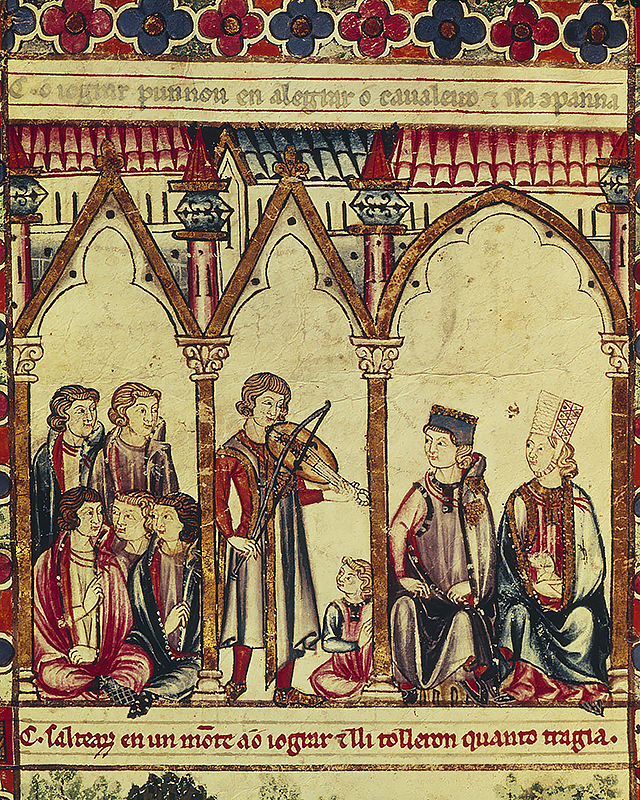
Medieval dance music
The music of the 1300’s in France became known as the Ars Nova (new art). The name was the written description of music by Philippe de Vitry, a French composer and poet, about 1320. Ars Nova featured greater variety of rhythm and more independence in part writing. Vitry and his famous contemporary Guillaume de Machaut of France wrote motets with complex rhythmic organization. Machaut also composed monophonic and polyphonic chansons of high quality. His Notre Dame Mass was the first polyphonic setting of the parts of the Ordinary of the Mass. This work, his songs, and his motets set him apart as one of the first great composers in Western culture.
In England, significant musical activity took place in the 1400’s with such composers as Leonel Power and John Dunstable. They, too, wrote motets, Mass movements, and secular songs of high quality.
Music in Italian areas began to flourish in the middle to late 1300’s. Many Mass movements, motets, and Italian secular songs of high artistic merit were written. Francesco Landini was one of several leading Italian composers of that time.
A contemporary of Dunstable in France was Guillaume Dufay. He was a leading composer of Masses and also wrote secular songs with French texts. Dufay’s music had a great influence on performers and composers of the next generation in France and the Netherlands.
The Renaissance.
In Western music, the transition to the Renaissance began in the early 1400’s. The Renaissance style lasted through the 1500’s. Most composers of the Renaissance began their careers as singers in cathedral or chapel choirs. They studied music and composition while they acquired general education. Gradually, secular music gained in importance.
Loading the player...Renaissance music: choir vocals
The development of printing in the West during the 1400’s had a major impact by making written music more available. The printing of music developed rapidly in the 1500’s and soon replaced the older system of copying by hand.
Loading the player...Renaissance music: Greensleeves
Franco-Flemish music.
Many developments in music occurred in Flanders, a region that included parts of what are now Belgium, the Netherlands, and northern parts of France. Johannes Ockeghem and Jacob Obrecht, both born in Flanders, were two major Flemish composers at the end of the 1400’s. They held positions as composer or musical director with royal and wealthy families in France and Italy.
Loading the player...Renaissance music: Franco-Flemish
Josquin Desprez was one of the greatest composers of the Renaissance. He was born in northern France but lived in Italy for many years. Desprez wrote Masses, motets, and secular compositions during the late 1400’s and early 1500’s.
Many Franco-Flemish composers held important positions with the church and nobility in Italy. During the 1500’s, young Italian composers studied with them and began to emerge as capable composers.
Italian music.
Giovanni Palestrina, in particular, became a master of polyphonic music. He wrote about 250 motets and about 100 Masses.
Italian vocal compositions called madrigals developed as a major type of secular polyphonic song in the 1500’s. Costanzo Festa, Luca Marenzio, and Claudio Monteverdi wrote madrigals for three to five unaccompanied voices. Most madrigals dealt with romantic themes, using Italian poetry about love, nature, and mythology.
Music in other countries.
At the end of the 1500’s, the Italian madrigal spread to England, where it was adapted to English texts. Soon the madrigal became popular in England through the compositions of William Byrd, Thomas Morley, and others.
In France, the chanson thrived in the 1500’s, with composers writing in a new style that featured quick, strong rhythms. The style is often called the Parisian chanson. Leading composers were Claudin de Sermisy and Clément Janequin.
Instrumental music.
Composers also wrote instrumental music in the 1500’s. Dances of many types flourished. Composers created new types of instrumental works from vocal forms. Two new types of instrumental music were the canzona, which developed from the French chanson, and the ricercare, which resembled the motet.
Orlando di Lasso and Philippe de Monte were the last Franco-Flemish master composers at the end of the 1500’s. Lasso, also known by the French form of his name, Roland de Lassus, composed almost 2,000 works, including Masses, chansons, and motets. Monte also wrote more than 1,200 secular choral pieces.
The Reformation
was a religious revolution that produced a number of new musical concepts in the second half of the 1500’s. In Germany, the Reformation leader Martin Luther and his followers wanted worshippers to participate more actively in church services. They especially wanted people to sing more and in local languages instead of the traditional Latin. To meet these goals, composers created the chorale, a hymn with German words sung in unison by the congregation.
In Switzerland, Reformation leader John Calvin and his followers believed that only Biblical texts should be sung in church. They set to music poems from the Bible called Psalms, first in French and then in other languages as the Reformation spread to other countries.
Similar changes came about in the Church of England during the reign of King Henry VIII in the mid 1500’s. A change to the use of English in church services was followed by development of the Service and the anthem, new types of liturgical music that gained prominence.
The Baroque period
in Western music extended from the early 1600’s through the mid-1700’s, though its roots date from the late 1500’s. During the Baroque period, new types of instrumental works developed, especially in Italy. These works included the sonata, concerto, suite, and fugue. New types of vocal music also emerged, such as monody, a song style with a single melodic line and chordal instrumental accompaniment. The longer and more complex cantata, opera, and oratorio also appeared.
Loading the player...Baroque music by George Frideric Handel
Andrea Gabrieli and his nephew Giovanni were composers who worked as organists at St. Mark’s Church in Venice, Italy. They both composed innovative works that influenced many Baroque composers. Giovanni became noted for his motets with instrumental accompaniment.
Baroque music was characterized by the use of chord-playing instruments, such as the harpsichord or organ, and low-pitched instrument, such as the viola de gamba or cello, to play the bass line. This group was called basso continuo or just continuo. Numbers were often added beneath notes in the bass line to show keyboard players the chords they should play.
Major Italian composers of the Baroque era included Giovanni Gabrieli, Claudio Monteverdi, Arcangelo Corelli, Alessandro Scarlatti, and Antonio Vivaldi. The major French composers of this period were Jean-Baptiste Lully and Jean-Philippe Rameau, both of whom were active in developing French opera. Writing for keyboard instruments became very important in France. François Couperin and Nicolas de Grigny wrote major works for harpsichord and organ.
Music for harpsichord was highly regarded in England in the 1600’s. William Byrd and Orlando Gibbons were major composers for the instrument. In the later 1600’s, Henry Purcell excelled in composing for the stage. His opera Dido and Aeneas (1689) is one of the finest English works of the period. Loading the player...
Dido and Aeneas
German Baroque composers wrote nearly every type of music. Heinrich Schütz was especially gifted in writing sacred music. Georg Philipp Telemann wrote over 1,000 cantatas along with other vocal music.
Johann Sebastian Bach and George Frideric Handel brought German Baroque music to its peak. Bach excelled in works for organ and harpsichord, chamber music, concertos, cantatas, oratorios, motets, and Masses. Handel is especially noted for his Italian operas and oratorios in English. 
The Classical period.
In the mid-1700’s, a new musical style developed. Often referred to as galant, the style was elegant and graceful, emphasizing prominent melodies supported by light accompaniment. This style grew into the Classical style, which flourished into the early 1800’s. The Classical style was noted for its clarity, balance, and regularity. By the mid-1700’s, these qualities could be heard in the sonata, chamber music, concerto, and symphony. During the Classical era, both instrumental and vocal music flourished. Opera became increasingly popular.
The major composers of instrumental music during the Classical period were Wolfgang Amadeus Mozart and Joseph Haydn of Austria and Ludwig van Beethoven of Germany. Each also wrote outstanding Masses. In addition, Mozart was one of the greatest opera composers. Loading the player...
Classical music from the 1800's
Many Classical composers wrote for the piano, which was invented in the early 1700’s and became increasingly popular. Beethoven’s piano sonatas rank among the masterpieces written for the instrument. The harpsichord declined in popularity in the late 1700’s and was ignored until it was revived in the mid-1900’s by composers and performers.
The Romantic era.
In the early 1800’s, music became more varied, intense, and expressive. The style of this music became known as Romantic. The Romantic style was not a revolt against the Classical style but an expansion of it. Beethoven’s later works show his growth from the clarity and directness of the Classical style to an increasingly complex and emotional Romantic style.
Loading the player...Classical Romantic music by Johannes Brahms
Romantic composers favored short works for soloists or small performing groups, and large works for orchestra and choir, which increased greatly in size. Pieces for solo piano and solo songs with piano accompaniment were especially popular. Composers in German-speaking countries were inspired to write great songs due to the rising popularity of the piano and the availability of great poetry. Franz Schubert of Austria excelled at composing art songs—called Lieder in German. The songs reflect Schubert’s skill and sensitivity in setting fine poetry to lyrical, easily sung melodies. 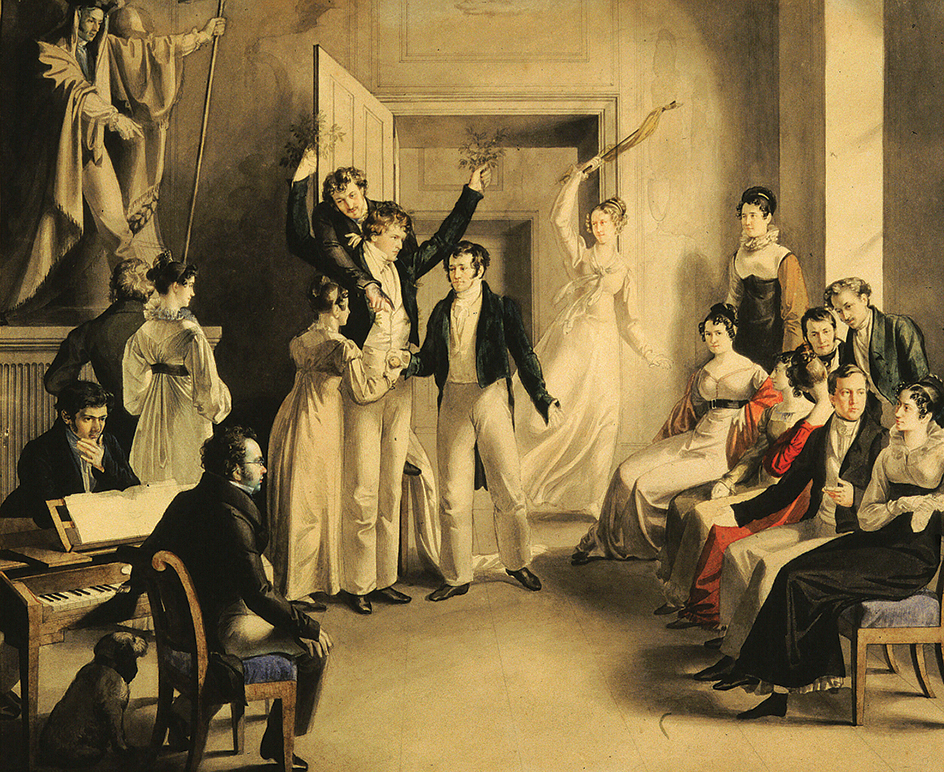
The piano’s expressive and dramatic qualities made that instrument an ideal instrument to support a solo voice. Schubert and the German composer Robert Schumann were among the composers who wrote song cycles, collections of songs related by a theme in the texts and sometimes by repeated melodic material. Short piano pieces and dances and longer pieces, especially the sonata, became increasingly popular. People enjoyed piano music, either in solo performance or with other instruments. The piano became the most popular instrument, for both the virtuoso and the amateur. Masterpieces of piano music were composed by Beethoven, Schumann, Johannes Brahms, and Felix Mendelssohn of Germany; Schubert of Austria; Frédéric Chopin of Poland; and Franz Liszt of Hungary. Loading the player...
Classical Romantic music by Chopin
Longer compositions for large performing groups were also popular in the 1800’s. These works were mainly symphonies, concertos, Masses, and oratorios. The great symphony composers included Germany’s Beethoven and Brahms; France’s Hector Berlioz; and Austria’s Schubert, Anton Bruckner, and Gustav Mahler. Concertos for solo piano or violin and orchestra were written for virtuoso performers. Operas became longer, more dramatic, and more romantic in the works of Richard Wagner in Germany and Giuseppe Verdi and Giacomo Puccini in Italy.
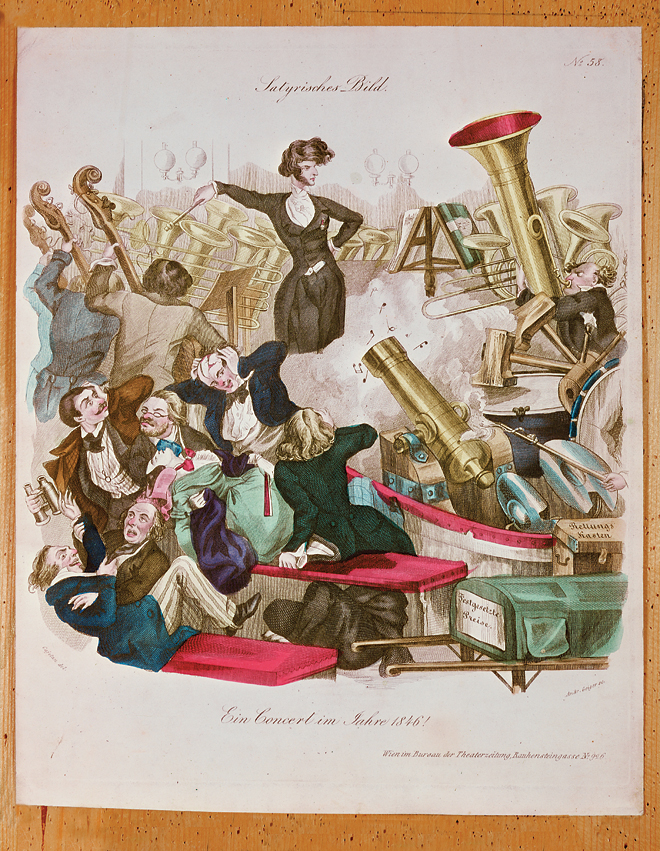
The hero was important in Romantic literature. In the same way, music lovers idolized the highly skilled soloist in Romantic music. Audiences thrilled to Chopin and Liszt as great pianists, and to the Italian composer-violinist Niccolo Paganini.
Romantic composers wrote the same types of music that had been favored in the Classical style. They also devised new types of short piano pieces, such as the nocturne and the intermezzo. The symphony developed along two paths. One was the abstract or absolute symphony that had purely musical content. The other was the program symphony, which explored a literary idea or presented a pictorial scene. The only larger work that was new in the Romantic era was the symphonic poem.
Loading the player...Classical romantic music (Tchaikovsky)
In the later 1800’s, many European composers began to feature national elements in their music. They used folk songs, folk dances, and national legends and folk tales in operas and other music. This nationalistic trend continued well into the 1900’s. Outstanding nationalistic composers included Edvard Grieg of Norway, Modest Mussorgsky of Russia, and Isaac Albéniz of Spain.
Loading the player...Classical nationalistic music
The 1900’s.
Composers of the 1900’s developed many new styles of music, including Impressionism, Neoclassicism, atonal music, experimental music, electronic music, third-steam music, and Minimalism. Some composers, such as Russia’s Igor Stravinsky, explored several styles.
Impressionism.
Claude Debussy in France developed a new style of music that came to be called Impressionism. This style expanded the limits of tonality (centering harmony around one pitch—C major) with unusual and rich harmonies, and different types of scales and chord progressions. Debussy was friends with many Impressionist painters and Symbolist poets of the later 1800’s. His music, like their paintings and poems, emphasized impressions of moods, emotions, and atmospheric effects rather than realistic details.

Music in the early 1900’s was a blend of the old and the new. Late Romantic styles continued in the works of many composers who used new approaches to tonal harmony. Nationalism continued in the works of such composers as Ralph Vaughan Williams of England, Béla Bartók of Hungary, Charles Ives and Aaron Copland of the United States, and Sergei Prokofiev and Dimitri Shostakovich of Russia (later part of the Soviet Union). Bartók’s piano and orchestra works rank among the most impressive works of the early 1900’s. Loading the player...
La Mer by Claude Debussy
Igor Stravinsky
was a Russian-born composer who explored several styles and approaches to music. His early works were strongly nationalistic, such as his ballet The Firebird (1910), based on Russian fairy tales. Stravinsky’s influential ballet The Rite of Spring (1913) portrays a fertility ritual. Although the music is fundamentally tonal, it abandons traditional harmonies to explore dissonance. Composers create dissonance by combining notes and chords that create harsh or restless sounds. 
Neoclassicism
blends characteristics of earlier music with distinctly modern traits. Stravinsky turned to Neoclassicism in many of his works, such as his ballet Pulcinella (1920). Pulcinella uses passages from the music of Giovanni Pergolesi, an Italian composer of the early 1700’s, and adds Stravinsky’s own orchestration and other personal touches. Other Neoclassical composers were Paul Hindemith in Germany and Béla Bartók.
Atonal music.
By 1908, the Austrian composer Arnold Schoenberg had become discontented with using tonality in his compositions. Schoenberg experimented with atonal music, which has no central key and is very dissonant. Loading the player...
Classical atonal music
In the 1920’s, Schoenberg formulated a system of atonal music called twelve-tone music or serialism. All 12 notes of the scale get equal emphasis, with no notes dominating, as they do in major or minor keys. Twelve-tone music became the basis for most of Schoenberg’s music in the 1930’s and 1940’s. Schoenberg’s innovative works aroused protests from audiences and conservative composers and critics. However, serialism had a strong influence on other composers of the 1900’s. This influence is seen mainly in the music of Schoenberg’s students, Austrian composers Anton Webern and Alban Berg.
In the 1940’s, Olivier Messiaen of France and Milton Babbitt of the United States independently developed total serialism. In this style, the composer arranges other aspects of the music in addition to pitch, such as rhythm and duration, in a certain order or series.
Experimental music.
Many composers wrote for traditional instruments but used them in unorthodox ways to create new, fresh sounds. In the mid-1900’s, Henry Cowell of the United States based several works on the music of Japan, India, and ancient Persia. Cowell also created new sounds with the piano by scraping, slapping, plucking, and sweeping the open strings with the hand.
John Cage of the United States developed one of the most inventive musical minds of the middle and late 1900’s. As a young composer, he was influenced by the French-born composer Edgard Varèse, developing new styles and forms of percussion music. Cage was famous for his prepared piano, in which several strings were muted with pieces of wood, metal, rubber, or glass. Cage also helped develop aleatory, or chance, music, in which all or part of the sounds depend on last minute choices by the performer. The composer provides only a general outline of the piece. The music leaves the performers largely free to create melodies and rhythms that vary with each performance. Loading the player...
Classical aleatory music
Electronic music
was explored by composers early in the 1900’s. In electronic music, the composer uses electronic equipment to create sounds that have any desired pitch, loudness, tone, and duration. Pierre Schaeffer of France created a forerunner of electronic music that he called musique concrete about 1948. Schaeffer recorded natural sounds, such as instruments, voices, and noise, and then manipulated the recording to achieve the sound he desired. Although not truly electronic, this early work solved some of the problems for later composers working with electronically generated sounds. Loading the player...
Classical electronic music
Electronic music studios emerged in radio stations in Europe and then in universities in the United States in the 1950’s. Some composers found that only electronic instruments, such as the synthesizer, provided the new sounds they desired. Other composers successfully combined traditional musical instruments with electronically generated sounds recorded on tape. Mario Davidovsky, an Argentine-born American composer, created many significant works in this way.
Third-stream music
combined the harmonic qualities of classical music with the rhythmic and improvisational elements of jazz, blues, ragtime, and other forms of popular music. The American composer George Gershwin combined classical and popular forms in some of his compositions, but the term generally refers to music beginning in the 1950’s. The American composer Gunther Schuller invented the term and created music in that style. Other composers of third-stream music included the Americans William Bolcom and John Lewis. Loading the player...
Classical Minimalist music
Minimalism
began in the 1960’s. Minimalist composers repeated melodies, rhythms, and harmonies with small, gradual changes. These repeated patterns often create a hypnotic effect. The American composers Steve Reich and Philip Glass became known for this style.
Classical music today
Many composers of the 1900’s wrote challenging, often atonal, works without considering the taste of their audience. By the late 1900’s, however, composers seemed increasingly interested in writing music to please their listeners. Leading practitioners of a return to tonality were the American composers John Adams and David Del Tredici. Adams began his career as a Minimalist and then turned away from that style. Del Tredici used folk music and rock music in many compositions. 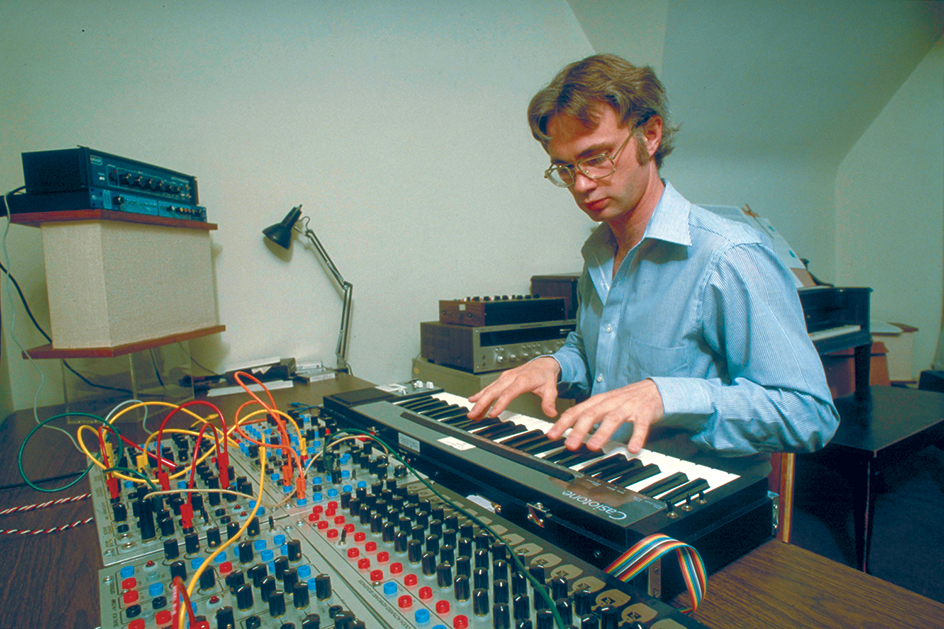
John Corigliano of the United States won acclaim for his film scores as well as his orchestral works. The Americans Joan Tower and Ellen Taaffe Zwilich are two of the most successful women composers in history.
